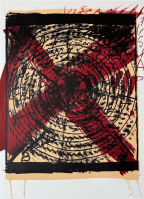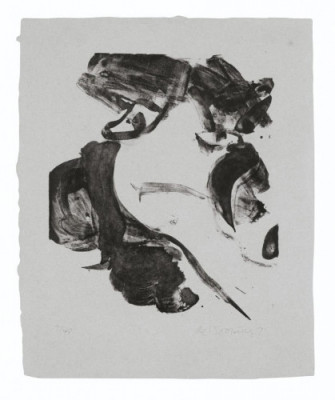
Details
Artist
Styles
// Antoni Tàpies' Cordill (1971) is an etching that exemplifies his exploration of texture, symbolism, and abstraction. This limited edition print features a single, looping cord-like form centered on a stark, minimalistic background, evoking a sense of raw materiality and simplicity. Below the cord, the letters A and B are inscribed on opposite ends, connected by a series of dots, suggesting a path or journey between two points. Tàpies often integrated found materials and everyday objects into his works, transforming them into symbols of introspection and spirituality. The restrained palette and delicate line work underscore the meditative quality of the piece, inviting viewers to contemplate the connection between seemingly ordinary elements and larger existential ideas.
Cordill , 1971
form
Medium
Size
78 x 60 cm
- Inches
- Centimeters
Edition
Price
- USD
- EUR
- GBP
Details
Artist
Styles
// Antoni Tàpies' Cordill (1971) is an etching that exemplifies his exploration of texture, symbolism, and abstraction. This limited edition print features a single, looping cord-like form centered on a stark, minimalistic background, evoking a sense of raw materiality and simplicity. Below the cord, the letters A and B are inscribed on opposite ends, connected by a series of dots, suggesting a path or journey between two points. Tàpies often integrated found materials and everyday objects into his works, transforming them into symbols of introspection and spirituality. The restrained palette and delicate line work underscore the meditative quality of the piece, inviting viewers to contemplate the connection between seemingly ordinary elements and larger existential ideas.
- Recently Added
- Price (low-high )
- Price (high-low )
- Year (low-high )
- Year (high-low )
Antoni Tapies
Primer Congreso Nacional De Neuropedriatria, 1982
Limited Edition Print
Etching
EUR 1,875
What is Gestural?
Gestural art is a term that describes painting with freely sweeping brushstrokes. The primary goal of gestural art is to allow the artist to physically express emotional impulses. The varied, yet expressive paint marks are intended to convey the artist's inner thoughts and emotions, which viewers are believed to understand through the dynamic and spontaneous application of paint.

























































































































